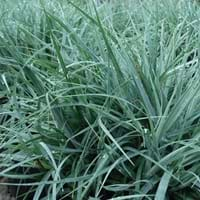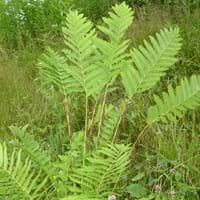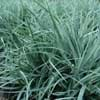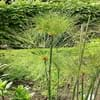Life Span
Perennial
Perennial
Origin
Northeastern United States, Western Europe
Northeastern United States, Eastern Asia
Types
Not available
Not Available
Habitat
Grassland, moorlands
Forest margins, Roadsides, Terrestrial
USDA Hardiness Zone
4-8
2-9
Sunset Zone
3a, 3b, 4, 5, 6, 7, 8, 9, 14, 15, 16, 17, 18, 19, 20, 21, 22, 23, 24
1a, 1b, 2a, 2b, 3a, 3b, 4, 5, 6
Habit
Clump-Forming
Upright/Erect
Flower Color
Yellow green
Not Available
Flower Color Modifier
Bicolor
Bicolor
Fruit Color
Light brown
Not Available
Leaf Color in Spring
Blue Green, Gray Green, Gray
Green
Leaf Color in Summer
Blue Green, Gray Green, Gray
Green
Leaf Color in Fall
Blue Green, Gray Green, Gray
Green
Leaf Color in Winter
Not Available
Not Available
Leaf Shape
Long hair-like leaves
Lance shaped
Plant Season
Spring, Summer, Fall
Spring, Summer, Fall
Sunlight
Partial Sun, Partial shade
Full Sun
Type of Soil
Clay, Loam, Sand
Loam
The pH of Soil
Acidic, Neutral, Alkaline
Acidic
Soil Drainage
Average
Well drained
Bloom Time
Early Summer
Not Available
Tolerances
Drought
Not Available
Where to Plant?
Ground
Ground
How to Plant?
Divison
Divison, Spores
Plant Maintenance
Low
Medium
Watering Requirements
Average Water Needs
Water Deeply, Water when soil is dry
In Summer
Lots of watering
Lots of watering
In Spring
Moderate
Moderate
In Winter
Average Water
Average Water
Soil pH
Acidic, Neutral, Alkaline
Acidic
Soil Type
Clay, Loam, Sand
Loam
Soil Drainage Capacity
Average
Well drained
Sun Exposure
Partial Sun, Partial shade
Partial Sun
Pruning
Remove damaged leaves, Remove dead branches, Remove dead leaves
Remove damaged leaves, Remove dead branches, Remove dead leaves, Shape and thin as needed
Fertilizers
All-Purpose Liquid Fertilizer
All-Purpose Liquid Fertilizer
Pests and Diseases
Aphids, Brown Spots, Galls
Mealybugs
Plant Tolerance
Drought
Drought
Flowers
Insignificant
None
Flower Petal Number
Single
Single
Foliage Texture
Fine
Fine
Foliage Sheen
Matte
Matte
Attracts
Wildlife
Hummingbirds
Allergy
Not Available
Skin irritation
Aesthetic Uses
Cottage Garden, Ground Cover, Landscape Designing
Showy Purposes
Beauty Benefits
Not Available
Not Available
Environmental Uses
Air purification
Air purification
Medicinal Uses
Not Available
Blood disorders
Part of Plant Used
Leaves
Buds
Other Uses
Used for Landscaping
Culinary use
Used As Indoor Plant
No
No
Used As Outdoor Plant
Yes
Yes
Garden Design
Edging, Groundcover, Mixed Border
Feature Plant, Groundcover, Mixed Border
Botanical Name
CAREX flacca
OSMUNDA claytoniana
Common Name
blue sedge, gray carex, glaucous sedge, carnation-grass
Interrupted Fern
In Hindi
ब्लू सेज
बाधित फर्न
In German
Blau-Segge
unterbrochen Fern
In French
Bleu carex
Fern interrompu
In Spanish
azul de la juncia
helecho interrumpido
In Greek
μπλε σπαθόχορτο
διακοπεί Fern
In Portuguese
azul Sedge
Fern interrompido
In Polish
niebieski turzyca
przerwana Fern
In Latin
blue Sedge
Fern intermissis
Phylum
Magnoliophyta
Pteridophyta
Class
Liliopsida
Polypodiopsida
Order
Cyperales
Osmundales
Family
Cyperaceae
Osmundaceae
Clade
Angiosperms, Commelinids, Monocots
Not Available
Tribe
Not Available
Not Available
Subfamily
Not Available
Not Available
Number of Species
Not Available
Difference Between Blue Sedge and Interrupted Fern
If you are confused whether Blue Sedge or Interrupted Fern are same, here are some features about those plants to help you choose better. Many people think that these two plants have the same characteristics, but one can see Blue Sedge and Interrupted Fern Information and learn more about it. Fertilizers required for proper growth of Blue Sedge are All-Purpose Liquid Fertilizer, whereas for Interrupted Fern fertilizers required are All-Purpose Liquid Fertilizer. Hence, one should know the basic difference between Blue Sedge and Interrupted Fern if you are planning to have them in your garden to enhance its beauty.
<
Flowering PlantsImportance of Blue Sedge and Interrupted Fern
Want to have the most appropriate plant for your garden? You might want to know the importance of Blue Sedge and Interrupted Fern. Basically, these two plants vary in many aspects. Compare Blue Sedge and Interrupted Fern as they differ in many characteristics such as their life, care, benefits, facts, etc. Every gardener must at least have the slightest clue about the plants he wants to plant in his garden. Compare their benefits, which differ in many ways like facts and uses. The medicinal use of Blue Sedge is Not Available whereas of Interrupted Fern is Blood disorders. Blue Sedge has beauty benefits as follows: Not Available while Interrupted Fern has beauty benefits as follows: Not Available.
Compare Facts of Blue Sedge vs Interrupted Fern
How to choose the best garden plant for your garden depending upon its facts? Here garden plant comparison will help you to solve this query. Compare the facts of Blue Sedge vs Interrupted Fern and know which one to choose. As garden plants have benefits and other uses, allergy is also a major drawback of plants for some people. Allergic reactions of Blue Sedge are Not Available whereas of Interrupted Fern have Skin irritation respectively. Having a fruit bearing plant in your garden can be a plus point of your garden. Blue Sedge has no showy fruits and Interrupted Fern has no showy fruits. Also Blue Sedge is not flowering and Interrupted Fern is not flowering . You can compare Blue Sedge and Interrupted Fern facts and facts of other plants too.





